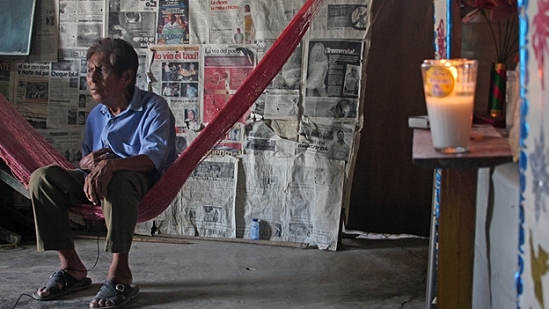Several of the 62 indigenous languages currently spoken in Mexico are considered “endangered”, spoken by so few people that they will die out in the next few years. The most extreme example is Ayapaneco, a language believed to be spoken today by only two individuals.
Ayapaneco (also known as Ayapa Zoque, Tabasco Zoque and Zoque-Ayapaneco) is one of several Zoque languages and dialects. The only remaining native speakers live in Ayapa, a village 10 kilometers (6 miles) east of Comalcalco, in the state of Tabasco. The native name for the language is Nuumte Oote (True Voice).
The language fell into disuse in the middle of the 20th century. Among the factors involved were the introduction of compulsory schooling in Spanish and the migration of many native speakers to towns and cities where the language was not spoken.
The last two known native speakers of the language are Isidro Velazquez (aged 70) and Manuel Segovia (77). The bad news is that they are apparently reluctant to talk to each other! They also disagree about some of the language’s details. The only one of their relatives attempting to learn the language is Manuel’s son (also named Manuel) who, for the past five years, has studied several hours a day in an attempt to become sufficiently fluent to teach it and keep it alive.
There is some good news. Daniel Suslak, a linguistic anthropologist at Indiana University, is trying to complete the first ever dictionary of the language, and two young Mexican film-makers plan to shoot a documentary entitled “Lengua Muerta” (Dead Language) starring the last two native speakers. The film’s director, Denisse Quintero (28), hopes to create an audiovisual memory that will serve future generations, while at the same time increasing awareness among the present generation of the need to preserve the remaining indigenous languages, together with the cultures that they represent. For more about their project (in Spanish), see the documentary-makers’ plea for funding and this Youtube video.
Some estimates put the number of different Indian languages in the 16th century in what became “New Spain” as high as 170. This number had dwindled to about 100 by 1900, and has continued to decline to the present day. The latest estimates are that at least 62 distinct languages (and 100 dialects) are still spoken somewhere in the country. The precise numbers are often debated by linguists, given that the distinction between a dialect and a language is not universally agreed.
Language is an essential part of culture, and every time a native language is lost, Mexico’s rich cultural tapestry loses a few more strands.
Want to learn more?
- UNESCO Atlas of the World’s Languages in Danger
- Language at risk of dying out – the last two speakers aren’t talking [Guardian online]
Related posts:
- The geography of languages in Mexico: Spanish and 62 indigenous languages
- Is the number of speakers of indigenous languages in Mexico increasing?
- An overview of Mexico’s indigenous peoples
- Relying on geography for orientation: some indigenous languages do not have words for “left” or “right”
- Mexico’s indigenous place names
- Mexican place names often have their roots in pre-Hispanic languages and have multiple levels of meaning
2 Responses to “Only two native speakers remain of Ayapaneco, an indigenous language in Tabasco”
Sorry, the comment form is closed at this time.

FIRST OF ALL, I WOULD LIKE TO THANK YOU THIS NEWSLETTER. MY WIFE IS FROM MEXICO. HER ENGLISH IS BETTER THAN MY SPANISH BUT NOT BY MUCH. I HAVE BEEN TRYING TO TRANSLATE THIS BUT I AM AFRAID THAT MY TRANSLATIONS LEAVE MUCH TO BE DESIRED. QUESTION; DO YOU HAVE A VERSION IN SPANISH? OR, A BOX TO CHOOSE THE ARTICLES IN SPANISH?
THANK YOU VERY MUCH.
DON BENNETT
Hi Don; glad you like the blog. We don’t publish a Spanish version, or articles in Spanish, but here is a link which uses Google Translate to view the website:
http://translate.google.com/translate?sl=auto&tl=es&js=n&prev=_t&hl=en&ie=UTF-8&layout=2&eotf=1&u=www.geo-mexico.com
The link will contain various language errors, no doubt, but should give your wife a reasonable idea of all the content. Regards, TB